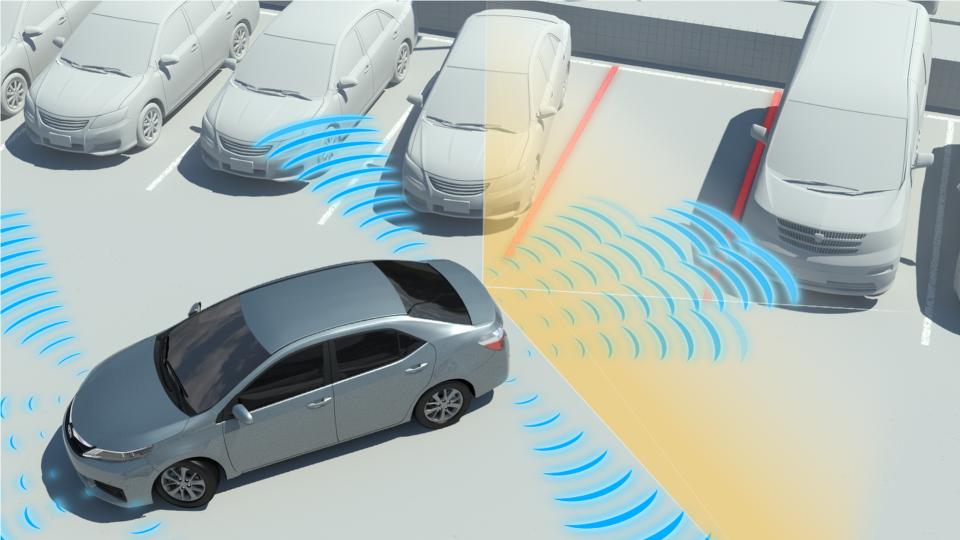 Parallel parking is hard for many drivers with parking space limited. It is an hard task, and it can lead to traffic. Fortunately, technology has an answer - cars that park themselves. Imagine finding the perfect parking spot, but instead of struggling with your car back and forth, you simply press a button, sit back, and relax. The same technology used in self-parking cars can be used for collision avoidance systems and ultimately, self-driving cars.
Parallel parking is hard for many drivers with parking space limited. It is an hard task, and it can lead to traffic. Fortunately, technology has an answer - cars that park themselves. Imagine finding the perfect parking spot, but instead of struggling with your car back and forth, you simply press a button, sit back, and relax. The same technology used in self-parking cars can be used for collision avoidance systems and ultimately, self-driving cars.
Showing posts with label Parking. Show all posts
Showing posts with label Parking. Show all posts
3 Nov 2011
Intelligent Parking Assist System (Self Parking)
 Parallel parking is hard for many drivers with parking space limited. It is an hard task, and it can lead to traffic. Fortunately, technology has an answer - cars that park themselves. Imagine finding the perfect parking spot, but instead of struggling with your car back and forth, you simply press a button, sit back, and relax. The same technology used in self-parking cars can be used for collision avoidance systems and ultimately, self-driving cars.
Parallel parking is hard for many drivers with parking space limited. It is an hard task, and it can lead to traffic. Fortunately, technology has an answer - cars that park themselves. Imagine finding the perfect parking spot, but instead of struggling with your car back and forth, you simply press a button, sit back, and relax. The same technology used in self-parking cars can be used for collision avoidance systems and ultimately, self-driving cars. 29 Aug 2011
Parking Sensors

Parking sensor systems use ultrasonic proximity detectors fixed in the front or rear bumpers, to measure the distances to nearby objects at low level. The sensors works in the principle of sonar to measure the time taken for each sound pulse to be reflected back to the receiver.
Depending on the speed of the vehicle and the distance to the obstacle, the system will warn the driver by visual and/or audible alert about the risk of collision. The feedback to the driver will generally indicate the direction and proximity of the obstacle.
Sensors are usually fitted to the rear of a vehicle but may also may be fitted to the front.
Rear sensors are activated when reverse gear is selected and then deactivated as soon as any other gear or neutral or park is selected.
Front sensors are generally activated by pressing a button and then automatically deactivated when the vehicle exceeds a certain speed, this is to avoid unwanted warnings in slow moving traffic.
Audible feedback
The most common form of feedback to the driver in a car with parking sensors is audible "beeps" or tones. Generally, the frequency of the beep indicates distance from an obstruction, with the beeps becoming faster the closer the vehicle moves to an object. A continuous tone may be heard when the vehicle is extremely close, often warning a driver to stop immediately to avoid collision.Visual feedback
Some systems use visual aids instead of audible tones, such as LED or LCD readouts to indicate distance from an object. The direction and distance to the obstacle is indicated by the location and strength of the warning symbols.Drawbacks:
Since the system relies on the reflection of sound waves, it may not detect some items that are not flat or large enough to reflect sound, for example a narrow pole or a longitudinal object pointed directly at the vehicle or near an object.
Some objects may have flat surfaces that are angled from the vertical. These objects can also cause damage by deflecting the return sound waves away from the sensors causing them not to be detected.
Subscribe to:
Posts (Atom)
Automobile Steering
Steering is one of the most important components of a car. Steering wheels are used in most modern land vehicles, including all mass-prod...

-
Y ou're driving home from a weekend vacation. It's late at night, and the winding two-lane road has no streetlig...
-
Steering is one of the most important components of a car. Steering wheels are used in most modern land vehicles, including all mass-prod...
-
S topping a car in a hurry on a slippery road can be very challenging. Anti-lock braking systems (ABS) take a lot o...

